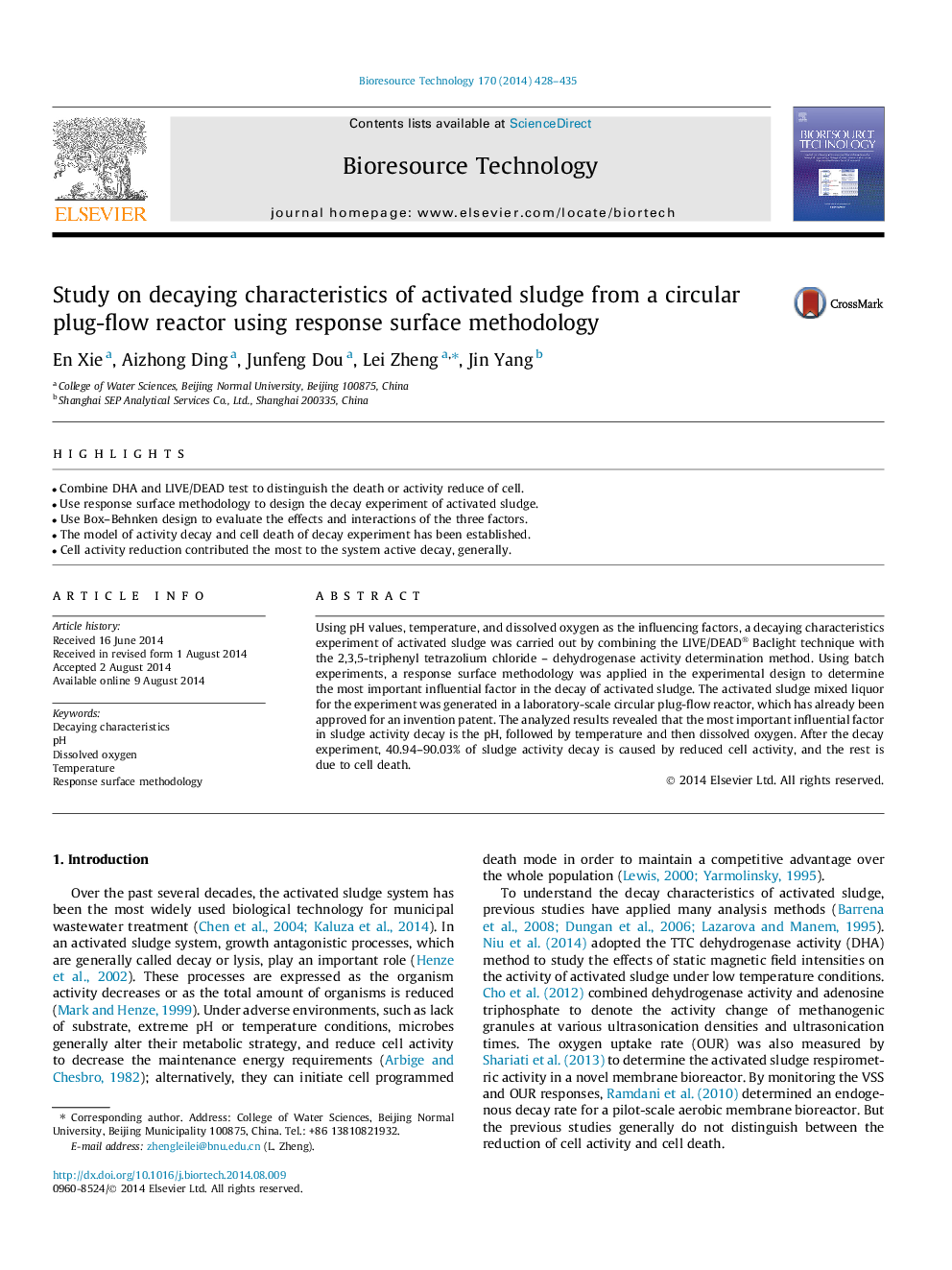| کد مقاله | کد نشریه | سال انتشار | مقاله انگلیسی | نسخه تمام متن |
|---|---|---|---|---|
| 680428 | 1459973 | 2014 | 8 صفحه PDF | دانلود رایگان |
• Combine DHA and LIVE/DEAD test to distinguish the death or activity reduce of cell.
• Use response surface methodology to design the decay experiment of activated sludge.
• Use Box–Behnken design to evaluate the effects and interactions of the three factors.
• The model of activity decay and cell death of decay experiment has been established.
• Cell activity reduction contributed the most to the system active decay, generally.
Using pH values, temperature, and dissolved oxygen as the influencing factors, a decaying characteristics experiment of activated sludge was carried out by combining the LIVE/DEAD® Baclight technique with the 2,3,5-triphenyl tetrazolium chloride – dehydrogenase activity determination method. Using batch experiments, a response surface methodology was applied in the experimental design to determine the most important influential factor in the decay of activated sludge. The activated sludge mixed liquor for the experiment was generated in a laboratory-scale circular plug-flow reactor, which has already been approved for an invention patent. The analyzed results revealed that the most important influential factor in sludge activity decay is the pH, followed by temperature and then dissolved oxygen. After the decay experiment, 40.94–90.03% of sludge activity decay is caused by reduced cell activity, and the rest is due to cell death.
Journal: Bioresource Technology - Volume 170, October 2014, Pages 428–435
